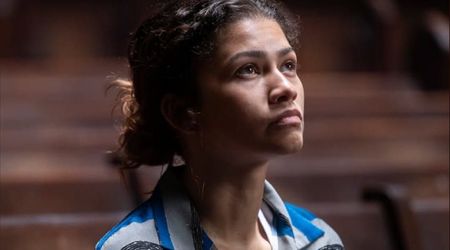'The Outsider' Episode 5 reminds us that horror does not always need jump-cuts and shadows to captivate

One reason why horror as a genre in series finds less success than horror as cinema is because of the story’s pace. In films -- even bad ones like ‘The Conjuring’ -- the story develops so fast that viewers are often left feeling dazed and confused. In films -- even brilliant ones like ‘Hereditary’ -- swift motions and jump-scares share the load with the story to creep out viewers.
HBO’s adaptation of Stephen King’s southern gothic horror novel ‘The Outsider’, however, rejects all horror tropes. It’s a risky move, but the show’s carefully controlled pace and visuals (and, of course, performances) make it work despite the absence of these crutches.
Take Episode five, for instance. Titled ‘Tear-Drinker’, the episode provides very little in terms of moving the story forward. Viewers are no closer to figuring out Terry Maitland’s (Jason Bateman) innocence. What the episode does, instead, is allowing itself to marinate for an hour in the show’s mythology.
Still only hinting at a supernatural element, ‘The Outsider’ lets viewers struggle through elements that almost feel like magic realism, but darker. It introduces the idea of a being that feasts on grief, but not just any grief: just what it causes. This supernatural entity claims all it touches; not immediately though. Eventually.
Where the fabulism ends and where reality begins is a line so blurry it almost doesn’t exist. One is often left wondering if this entity, this conjuring, is only but a manifestation of a sick mind. If it is only a manifestation of the ghosts and demons inside one’s head. If it is the anchors we tie ourselves to; all but guaranteeing that we drown. If there really is a bogeyman or just a projection of one’s depression.
Everyone in the show has their own ghosts to deal with. Jeannie Anderson’s (Mare Winningham) ghost is the same hooded, seemingly-faceless, "man" that we have seen around, mostly at the edge of the screen. It is difficult to say if Jeannie’s manifestation of this entity was caused by infectious fear and despair in the town, catalyzed by Jessa Maitland’s frequent (and similar) nightmares.
Ralph Anderson’s (Ben Mendelsohn) ghost is his dead son Derek. It is guilt. It is the memories of losing control. It is a reminder that he had lost way too much; and almost everything. Jack Hoskins’ (Marc Menchaca) ghost is his temper. It is his frequent loss of control. It is insecurity and the inability to deal with it.
As a mid-season episode that kind of sits still, ‘Tear-Drinker’ can feel like a drag for a bit. But mostly, it is a refreshing reminder why not all horror has to be shadows lurking here and there, a grotesque demon on the prowl, and gnarly hands pulling up from the dark. It is a reminder that the scare comes mostly from within. From our personal demons.
It comes from trauma. As the ghost of Derek tells Ralph at the very end of the episode, “Let me go.”
'The Outsider' airs on Sundays at 9 pm EST on HBO.










